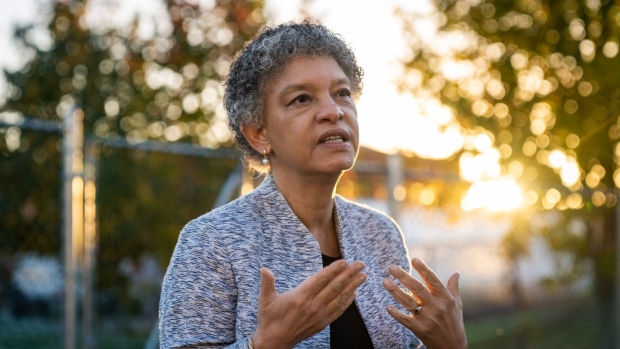Mar 30, 2023
Fed’s Collins Says Some More Tightening Needed, Banks Are Strong
, Bloomberg News

(Bloomberg) -- Federal Reserve Bank of Boston President Susan Collins said the banking system is sound and more interest-rate increases are needed to bring down inflation.
“Inflation remains too high, and recent indicators reinforce my view that there is more work to do, to bring inflation down to the 2% target associated with price stability,” Collins said Thursday in remarks at conference hosted by the National Association for Business Economics in Washington.
Collins’s remarks echo those made by other Fed officials last week, when policymakers raised interest rates by a quarter point and said some additional tightening may be warranted. Chair Jerome Powell had earlier opened the door to moving at a faster pace, but such expectations retreated in the aftermath of the collapse of Silicon Valley Bank.
The Boston Fed chief, who doesn’t vote on monetary policy decisions this year, said she views quarter-point increases as the “appropriate” pace needed as officials bring rates to a level that is sufficiently restrictive to tame inflation.
Data out Friday is expected to show price pressures ran at a pace more than double the Fed’s target in February, according to the central bank’s preferred measure.
In answering questions after her prepared remarks, Collins reiterated her view that the Fed can successfully lower inflation without triggering a recession. However, she said some rise in unemployment will be necessary to achieve that.
She also said it’s too soon to determine what action will be appropriate when the Fed next meets in May.
Tighter Credit
Collins said recent banking stress adds more uncertainty to the economic outlook but noted that tighter lending standards could later reduce the need for further rate increases.
“While the banking system remains strong and resilient, recent developments will likely lead banks to take a somewhat more conservative outlook and tighten lending standards, thus contributing to slowing the economy and reducing inflationary pressures,” Collins said in her prepared speech. “These developments may partially offset the need for additional rate increases.”
Economic projections released at the March meeting showed the median official sees rates rising to 5.1% by the end of this year. That would suggest around one more quarter-point rate increase in 2023.
Collins said that path balances the risks of the Fed not raising rates enough with those linked to financial stress, and she too doesn’t foresee any rate cuts this year. Traders disagree, due in part to some expectations that the banking crisis will push the US closer to recession.
That’s despite swift action from federal authorities to backstop deposits and stabilize the banking system. The Fed also boosted international access to dollars by enhancing swap lines with its key central bank counterparts.
Officials will keep an eye on the banking system as things develop and take further action if needed, Collins said. “The Federal Reserve continues to monitor financial conditions closely, and is prepared to use all tools at its disposal in keeping the banking system safe and sound,” she said.
(Updates with Collins’s remarks during question-and-answer session)
©2023 Bloomberg L.P.






